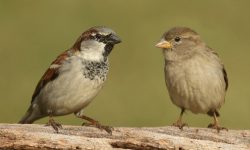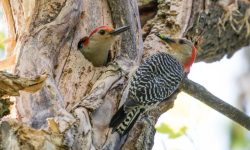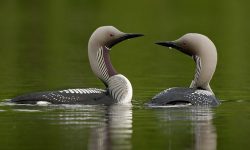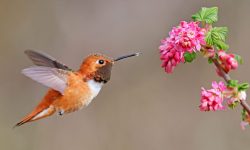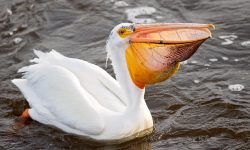Hawks are among the most skilled and adaptable birds of prey, dominating skies and fields with precision and power. Their diet is as varied as their habitats, ranging from urban parks to dense forests and open plains. Understanding what hawks like to eat most offers valuable insight into their behavior, role in ecosystems, and survival strategies.
While hawks are obligate carnivores, their preferences vary by species, region, and season. This article explores their favorite foods, how they hunt, and what they feed their young, highlighting the diversity and adaptability that make hawks such formidable predators.
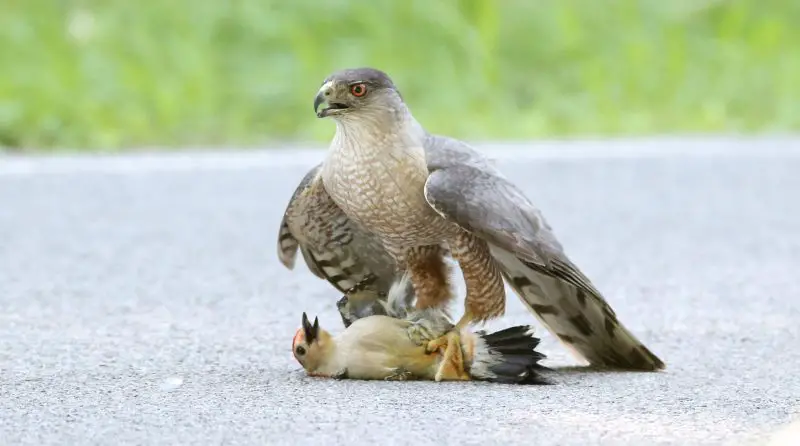
Primary Foods in a Hawk’s Diet
Small Mammals: The Lifeblood of the Hunt
For most hawks, small mammals are the backbone of their daily nutrition. These warm-blooded creatures provide a rich blend of protein and fat—essential macronutrients that sustain the hawk’s high-energy lifestyle, especially during breeding or migration. Species like the Red-tailed Hawk and Ferruginous Hawk are particularly reliant on a steady supply of rodents and other small mammals, which they consume with remarkable efficiency.
The most common small mammals targeted include:
-
Field mice, which are abundant in grassy meadows and farmland
-
Voles, favored for their size and soft bodies, making them easy to digest
-
Squirrels, especially ground squirrels, which offer a larger meal but demand more effort to catch
-
Chipmunks, quick-moving prey that hawks ambush from above
-
Rabbits and hares, especially young or injured individuals, which provide substantial nourishment
These animals thrive in diverse habitats, from pristine forests to suburban yards, allowing hawks to thrive across a wide range of environments. From high perches or while soaring overhead, hawks scan the ground below with laser-sharp vision, detecting even the slightest movement in grass or leaf litter. Once prey is spotted, they execute a rapid stoop or glide, striking with powerful talons capable of delivering a fatal grip in milliseconds.
This predation not only sustains hawks but also plays a vital ecological role, keeping rodent populations in check and maintaining balance in natural food webs.
Birds: Agile Prey for Agile Hunters
While many hawks feed on mammals, others have evolved to become expert bird hunters. In particular, members of the Accipiter genus—such as the Cooper’s Hawk (Accipiter cooperii) and Sharp-shinned Hawk (Accipiter striatus)—are built for speed, stealth, and aerial precision. These forest-dwelling raptors are equipped with long tails and short, rounded wings, ideal for darting through dense foliage in pursuit of fast-moving avian prey.
Their most frequent targets include:
-
Sparrows, especially House Sparrows that gather in urban or suburban flocks
-
Starlings, noisy and abundant in agricultural and residential areas
-
Pigeons, which are relatively slow flyers and provide a substantial meal
-
Doves, such as Mourning Doves, whose predictable ground-foraging habits make them vulnerable
Hawks that specialize in bird hunting often stake out high-traffic areas, such as woodland edges, forest clearings, or even backyard bird feeders, where small birds gather in high numbers. With intense focus, these hawks launch sudden, explosive ambushes, weaving through branches or diving from above to grab prey mid-flight.
During the breeding season, they may also prey on nestlings or even eggs, capitalizing on easily accessible, nutrient-dense food to meet increased energy demands. This behavior not only provides sustenance for adult hawks but also supports the rapid growth of their own chicks during the nesting period.
While these hunts may seem brutal, they are a crucial part of the food chain, maintaining healthy bird populations and preventing overpopulation of certain species.
Reptiles and Amphibians: Warm-Weather Supplements
In warmer climates and during hot seasons, many hawks diversify their diets by targeting cold-blooded prey such as reptiles and amphibians. These animals become more active in higher temperatures, making them easier for hawks to detect and capture. For species living in open grasslands, deserts, or southern woodlands, these prey items serve as crucial nutritional supplements when small mammals are less abundant or harder to catch.
Common examples of reptilian and amphibian prey include:
-
Snakes, including garter snakes, rat snakes, and even venomous species like copperheads (especially taken by larger hawks like Red-tailed Hawks or Swainson’s Hawks)
-
Lizards, such as anoles, skinks, and fence lizards, which are often hunted in rocky or sunlit areas
-
Frogs, which are plentiful around ponds, marshes, and ephemeral wetlands during breeding seasons
-
Toads, especially during rainy periods when they emerge in large numbers to forage or breed
Hawks use their keen eyesight to detect subtle movements among leaf litter, grasses, or along sunny logs and rocks. Their swooping attacks and razor-sharp talons allow for efficient capture of these slippery or armored prey. Some hawks, such as the Zone-tailed Hawk, are known to mimic vultures while soaring to reduce suspicion among potential ground-dwelling prey before launching a surprise strike.
Though reptiles and amphibians generally contain less fat than mammals, they provide hydration, protein, and trace minerals, making them especially important during nesting season when energy demands increase. For juvenile hawks, these prey are often easier to subdue and serve as ideal transitional foods during their early hunting lessons.
This flexibility highlights the hawk’s ability to adapt to environmental changes and remain effective apex predators across a wide range of habitats.
Insects and Arthropods: A Protein Boost
Though hawks are primarily known for hunting vertebrate prey, insects and arthropods can play a surprisingly important role in their diet—especially for juvenile hawks, smaller raptor species, or those living in arid and tropical regions. These creatures are not only abundant and easy to catch, but they also provide a quick source of protein, fats, and micronutrients essential for survival and growth.
Hawks have been observed feeding on:
-
Grasshoppers, especially during population booms in late summer and fall
-
Beetles, including large ground beetles and wood-boring species
-
Crickets, which are often flushed out from under vegetation or leaf litter
-
Spiders, particularly orb-weavers and wolf spiders found in fields and shrublands
-
Scorpions, in desert regions where they are commonly active at dawn or dusk
Smaller hawk species such as the American Kestrel and Broad-winged Hawk rely more heavily on insect prey, especially during breeding season when soft-bodied, easy-to-digest insects help feed growing chicks. Juvenile hawks, still mastering their hunting skills, often begin by targeting slower-moving insects before graduating to birds or mammals.
These prey are typically captured during low-altitude glides, quick dives from perches, or hover-hunting techniques used in open terrain. Some hawks even forage on foot, walking along the ground to pick off arthropods hiding in grasses or cracks in dry soil.
Insects and arthropods may lack the caloric density of vertebrate prey, but they are crucial dietary supplements—especially in regions or seasons where larger animals are scarce. Their high water content also offers hydration, making them valuable in hot, dry environments.
Ultimately, the inclusion of these small but mighty creatures illustrates the dietary flexibility and ecological adaptability that make hawks successful predators across diverse landscapes.
Fish and Aquatic Creatures: Rare but Opportunistic Delicacies
While hawks are not typically associated with aquatic hunting like ospreys or eagles, some species exhibit surprising adaptability when living near wetlands, riverbanks, or marshy forests. Among the most notable is the Red-shouldered Hawk, which is known to supplement its diet with aquatic prey when the opportunity arises.
These hawks have been observed catching:
-
Small fish, such as minnows or juvenile sunfish, plucked from shallow waters or edges of streams
-
Crayfish, which are often abundant in muddy ditches or freshwater marshes
-
Amphibians, including frogs, toads, and salamanders, especially during rainy seasons when these creatures are most active
Rather than diving or skimming like aquatic raptors, these hawks use stealth and patience, often perching quietly near a pond or creek and swooping down to snatch prey from the water’s edge. In flooded woodlands or riparian corridors, Red-shouldered Hawks may even hunt by walking on submerged logs or wading into shallow pools.
This behavior reflects a remarkable degree of dietary plasticity. Fish and amphibians may not be their first choice, but they offer a valuable source of protein and moisture, especially during dry summers or in habitats with fewer terrestrial mammals. Juvenile hawks learning to hunt may also target easier, slower-moving aquatic prey before advancing to more agile targets.
Though rare in the overall diet of most hawk species, these aquatic forays highlight the hawk’s ability to exploit available resources in diverse ecosystems—proving that even land-loving raptors can take advantage of watery habitats when the timing is right.
How Hawks Hunt and Adapt Their Diet
Visual Precision and Aerial Prowess
Hawks are exceptional visual predators, equipped with eyesight estimated to be 4 to 8 times sharper than that of humans. This acute vision enables them to spot small mammals, birds, or reptiles from hundreds of meters away, even when prey is partially concealed by vegetation.
Their hunting methods are diverse and finely tuned to their body type and habitat. Many hawks soar high in the sky, using thermal currents to conserve energy while scanning expansive fields below for movement. This soaring allows them to cover large areas efficiently while maintaining a bird’s-eye view of potential prey.
Others adopt a perch-hunting strategy, sitting motionless on tall trees, fence posts, or utility poles. From these vantage points, they wait patiently for prey to appear before launching a rapid, surprise attack. This ambush technique minimizes energy expenditure and increases hunting success in wooded or suburban environments.
Some hawks, like the smaller Accipiters, are built for agility and speed. They hunt by gliding low over open ground or weaving through dense foliage, relying on swift, sudden strikes to capture fast-moving birds or mammals. Their compact wings and long tails give them remarkable maneuverability, crucial for navigating forests and thickets.
This adaptability in hunting style and prey choice demonstrates the hawks’ remarkable ability to exploit various ecosystems — from open grasslands to dense woodlands — making them one of nature’s most efficient and versatile raptors.
Regional and Seasonal Adjustments in Hawk Diets
Summer Abundance vs. Winter Scarcity
During the warmer months of spring and summer, hawks benefit from a greater abundance and diversity of prey. Insects like grasshoppers and beetles become readily available, along with reptiles such as lizards and snakes. Small mammals like voles, mice, and rabbits are highly active, providing a rich and protein-packed food supply. This seasonal bounty allows hawks to maintain high energy levels needed for breeding and raising chicks.
As winter approaches and temperatures drop, prey availability declines significantly. Hawks face scarcer food resources, often relying on rodents burrowing beneath snow layers or seeking shelter in dense vegetation. When live prey becomes limited, hawks may opportunistically feed on carrion or scavenge near human settlements.
Urban Hawks and Their Remarkable Adaptability
In urban and suburban areas, hawks demonstrate impressive flexibility in their diet. They frequently prey on abundant city-dwelling animals such as pigeons, rats, and sparrows that gather around bird feeders. This urban hunting allows them to thrive in environments drastically altered by humans.
Moreover, some hawks scavenge roadkill or human food scraps, behaviors that highlight their opportunistic nature. Their ability to adjust hunting techniques and prey choices according to seasonal and regional changes ensures their survival across a wide range of habitats, from rural wilderness to bustling cities.
What Hawk Chicks Eat: Nourishment for Growing Raptors
Feeding the Nestlings
During the critical nesting period, adult hawks play a vital role in nourishing their chicks. They provide a diet rich in protein and nutrients essential for rapid growth and development. Common prey delivered to the nest includes:
Small mammals such as mice and voles
Insect larvae rich in protein
Nestling birds vulnerable to predation
Reptiles and amphibians like lizards and frogs
Adult hawks expertly tear prey into bite-sized pieces to make feeding easier for the helpless chicks. As the young hawks grow stronger, they gradually begin receiving larger portions and eventually whole prey items.
Teaching the Art of Hunting
After fledging, hawk juveniles enter a crucial learning phase. During several weeks of parental guidance, fledglings develop essential hunting skills, including:
Identifying and stalking potential prey from a distance
Practicing precision dives and pounces to capture food
Handling prey effectively using their developing sharp talons
Parents continue to provide food and support throughout this period, ensuring the juveniles gain confidence and proficiency before becoming fully independent hunters.
Conclusion
Hawks are versatile and efficient predators whose diets reflect their adaptability and ecological roles. While small mammals like rodents top their list of favorite foods, hawks also eat birds, reptiles, amphibians, insects, and even carrion when necessary. Their hunting strategies vary by species and season, but all hawks share a carnivorous appetite shaped by keen eyesight, sharp talons, and tactical flight.
Whether soaring through rural skies or navigating urban canyons, hawks maintain balance in ecosystems by controlling prey populations. Understanding what hawks like to eat most not only enriches birdwatching experiences but also highlights the intricate connections between raptors and the environments they inhabit.

